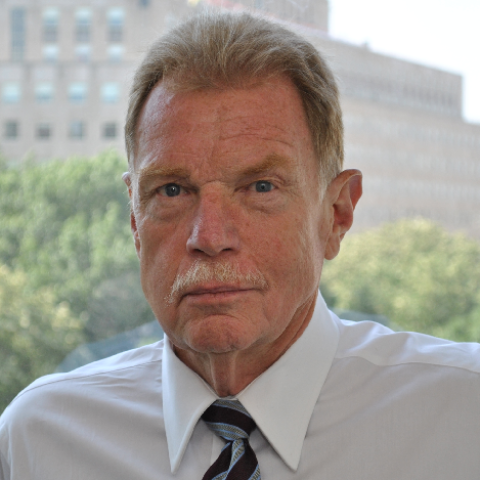During her confirmation hearing, Attorney General nominee Loretta Lynch appeared to break with the President on drug policy by expressing clear opposition to legalization. Coupled with Colorado Governor John Hickenlooper's reflections at The World Economic Forum in Davos that the January 2014 legalization of marijuana in his state was "a bad idea" and that the cash business presented a clear threat of "corruption," some thought there might be a return to rule of law at the Department of Justice (DOJ).
Hopes faded with a look at Lynch's next line, that opposition to legalization was the "current" position at DOJ. The Administration regards the federal Controlled Substances Act to be intact, notwithstanding the fact that they are not enforcing it in states that have legalized. Such non-enforcement was supposed to be conditional on no marketing marijuana to youth, no increased underage access, and no spread of marijuana to surrounding states, any of which would trigger federal enforcement.
Many see Colorado as pursuing an experiment in federalism. But Colorado operates only at presidential sufferance, with federal enforcement held in abeyance through executive memoranda. This is as much a matter of unilateral presidential will as President Obama's changes to immigration and healthcare law.
Still, what has the past year shown in Colorado? Commercialization includes blatant ads tailored to youth. Potent drug-laced gummy bears and fruit juices with hallucinogenic effects, featuring cartoon characters, are widespread. And the promise that this would bring federal enforcement has been broken.
Arrests for illegal (mostly underage) use increased in Denver 260 percent during 2014, even before the year ended. Hospital emergency departments experienced an increase in marijuana-related episodes, including severe burns from butane explosions as users concentrated THC, the intoxicating chemical.
Schools report disciplinary problems, often from youth using "vaporizers" in class. Daily use of the drug, highly damaging, is soaring, with Colorado already exhibiting rates 35 percent higher than the national average. Law enforcement reports a continuing black market, in part because of taxes on the official product.
Is marijuana crossing state lines? Colorado marijuana is affecting 40 additional states, according to the same law enforcement report stating, "By legalizing marijuana...instead of eliminating (the black market), we have become it."
The problem is so severe that Nebraska and Oklahoma will sue, arguing that Colorado has "created a dangerous gap" in the federal drug-control system, where "Marijuana flows from this gap into neighboring states."
These documented violations of the supposed "red lines" set by DOJ have simply been ignored.
Increased drug use, measured even before commercial sales, can be seen in state-level data from the National Survey on Drug Use and Health, where mere anticipation of the law shaped increases. Comparing the period 2011-2012 against 2012-2013, of Coloradans 12 and older, there was a 22 percent increase in regular marijuana use and a 33 percent increase for those 26 and older. There will be worse to come.
The acceptance of marijuana use was clear in the youth study Monitoring the Future (MTF), which reported a sharp decrease nationwide in perceptions of risk in smoking marijuana in 2014, a decline since 2009 of 31 percent among 12th graders. Historically such declines presage a surge in adolescent use--indicating we are likely in the calm before a coming storm.
Many 2014 news accounts stressed how "successful" the law has been despite the absence of 2014 data. In one sense, the Colorado experiment has worked; marijuana is widely consumed by Colorado residents (including homeless arrivals) and drug tourists (the Department of Revenue reported 45 percent of sales to out-of-state ID holders), while potency has skyrocketed.
There is additional impact on laws such as child endangerment and food safety. Nationwide, MTF reports 26 percent of 12th graders who used marijuana in the past year have consumed edibles laced with the intoxicant THC. "Legal" marijuana edibles are reported to be nearly half of all commercial sales in Colorado.
Further, to facilitate the Colorado market, banking rules against criminal enterprises are being dismantled by DOJ guidance, while marijuana businesses are insulating themselves against state regulation. State coffers have not realized the projected benefits from taxes, while the payment of federal taxes is a mystery, since the business remains illegal at the federal level. The threat to public integrity is real.
Coincident with the damage on the policy side, scientific research during 2014 reinforced the link between marijuana and serious health damage. The Proceedings of the National Academy of Sciences reported brain abnormalities in chronic users, while (beyond the 2012 study documenting an 8 point IQ loss from heavy use), the Journal of Neuroscience reported that even occasional use produces alterations in the brain.
The British medical journal, The Lancet, showed that the effects of marijuana include increased odds of school drop-out and suicidal propensity, while a 20-year review of research in the journal Addiction confirmed marijuana's "gateway" effect to other illicit drugs, as well as its link to schizophrenia. Finally, in June the Obama administration's top addiction scientist, Dr. Nora Volkow, summarized the adverse consequences in the New England Journal of Medicine, emphasizing not only the risk of psychosis, but marijuana's destructive effects on memory, cognition, and learning.
Colorado has greatly increased the prevalence and danger of marijuana use. The arc of the "experiment" is not in doubt. The Administration has proclaimed, with characteristic self-regard, that its policies are grounded in evidence. The evidence from Colorado is as clear as it is damning.




















